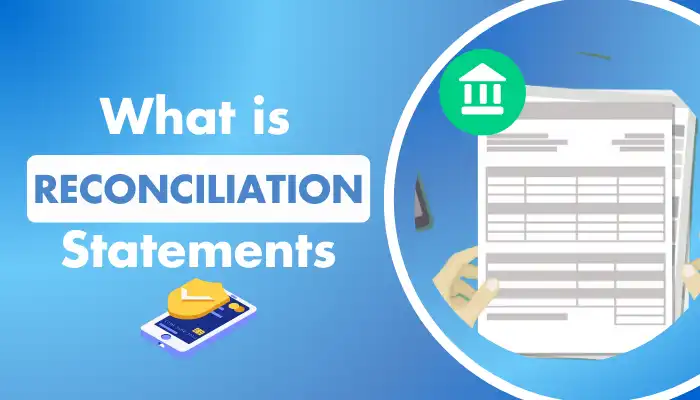Hey there, fellow finance enthusiasts and curious minds! Ever heard of the enigmatic “Bank Reconciliation Statement” and wondered what it’s all about? Fear not, because we’re here to demystify this financial puzzle for you! So, buckle up, grab your favorite beverage, and let’s embark on a thrilling journey through the intricacies of bank reconciliation statements!
Contents
What Is Bank Reconciliation Statement?
First things first, let’s get down to brass tacks and answer the burning question: what is a bank reconciliation statement? Simply put, it’s a financial statement that acts as a detective’s tool, helping individuals and businesses ensure that their recorded financial transactions match the corresponding bank records. In other words, it’s like making sure your books and your bank are on the same wavelength!
Now, you might be wondering why such a statement is necessary. Well, picture this: you’re a business owner, and every month, you record various transactions in your books – payments, deposits, expenses, and more. But, lo and behold, when you receive your bank statement, it doesn’t match what you have in your books! Cue the suspenseful music!
The Importance of Bank Reconciliation Statement
Keeping the Balance: Why Accuracy Matters!
Here’s the deal: errors happen. Whether it’s a simple slip of the finger when recording a transaction or an unforeseen bank fee, discrepancies can creep into your financial records without you even realizing it. The bank reconciliation statement is your financial guardian angel, catching those discrepancies and ensuring that the balance between your books and your bank remains harmonious!
Unveiling the Culprit: Detecting Errors and Fraud
Imagine this scenario: you spot an expense in your bank statement for a transaction you don’t recognize. Panic sets in as you fear someone might have hacked your account! Before you break into a cold sweat, breathe easy. The bank reconciliation statement allows you to identify any unauthorized transactions, saving you from financial foul play and putting your mind at ease.
How to Prepare a Bank Reconciliation Statement
Alright, now that we know the what and the why, let’s get into the nitty-gritty of how to prepare a bank reconciliation statement. It’s not as daunting as it sounds, we promise!
Step 1: Gather the Necessary Information
Before you begin, arm yourself with the following tools:
- Your latest bank statement.
- Your cash book or general ledger.
- Any relevant receipts or transaction documents.
Step 2: Start with the Ending Balance
Kick things off by noting the ending balance in your bank statement for the given period. Keep this as your starting point.
Step 3: Adjust for Outstanding Checks and Deposits
Ah, the plot thickens! Here’s where you take into account any checks you’ve issued but haven’t cleared yet (outstanding checks) and any deposits you’ve made that are yet to appear in your bank statement (outstanding deposits). Adjust your bank statement balance accordingly.
Step 4: Account for Bank Errors
Banks are not infallible, and mistakes can happen on their end too! If you spot any errors in your bank statement, such as double charges or missing deposits, now’s the time to adjust them.
Step 5: Reconcile the Reconcilable
As the pieces of the puzzle come together, you’ll find that certain transactions may not have been accounted for in your cash book. These might include bank fees, interest income, or even corrections made by the bank. Reconcile these differences in your bank reconciliation statement.
Step 6: Voilà! The Reconciliation
Now that you’ve crossed every “t” and dotted every “i,” you should have a balanced bank reconciliation statement! Give yourself a pat on the back – you’ve successfully solved the case!
FAQs: Common Queries on Bank Reconciliation Statement
- Why do I need to reconcile my bank statement? Reconciling your bank statement ensures accuracy in your financial records and helps detect any errors or fraudulent activities.
- How often should I reconcile my bank statement? It’s best to reconcile your bank statement every month, shortly after receiving it.
- What if my bank reconciliation statement doesn’t balance? Don’t fret! Double-check your calculations and look for any missed adjustments or errors. If all else fails, don’t hesitate to reach out to your bank for assistance.
- Can I automate the bank reconciliation process? Absolutely! Many accounting software options offer automated bank reconciliation features, saving you time and effort.
- Are bank reconciliation statements only for businesses? While businesses benefit greatly from bank reconciliation statements, individuals can also use them to keep track of personal finances and detect any discrepancies.
Conclusion
Congratulations, detective! You’ve cracked the case of the mysterious bank reconciliation statement! Now armed with this financial superpower, you can confidently navigate the complexities of your finances, ensuring accuracy and detecting any lurking errors or fraud.
So, the next time you spot your bank statement arriving in the mail, don’t fear it; embrace it! Reconciliation awaits, and with it comes the peace of mind that your books and your bank are dancing to the same tune!
Stay financially savvy, folks! Until next time, keep reconciling, and keep thriving!

